Rampoeng Temple : The Northern Insight Meditation Center
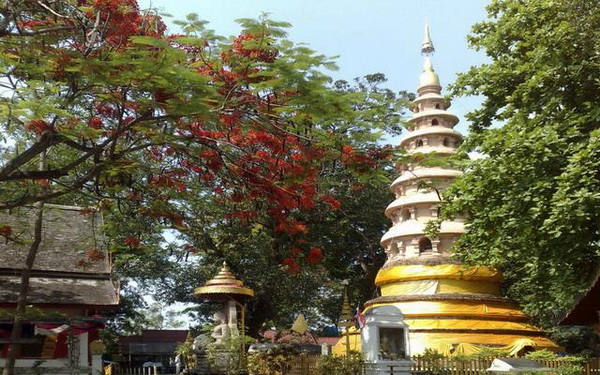
Wat Rampoeng : The Northern Insight Meditation Center welcomes all who are willing to learn the Vipassana-Meditation Practice to develop the mind.
May you be happy, free from suffering, diseases, grief, troubles, difficulties and danger and be protected from all misfortune.
History of Rampoeng Temple :
King Tilokaraj, of the Mengrai Dynasty, was the twelfth king of Chiangmai from 2031 to 2040 BE (1488-1497 A.D.). He had only one son, Tao Sree Boonroeng. King Tilokaraj was told by his favourite wife that Tao Sree Boonroeng, who was then twenty years old, was trying to overthrow him and become king himself, Consequently, King Tilokaraj sent his son away to rule Chiengsaen, which was under the domination of Chiangmai at the time.
At Chiangrai, Tao Sri Boonroeng had a son. This child was born while his mother was travelling and staying on the top of a mountain in Chiangrai (Doi-Bua). So Tao Sree Boonroeng named his son Yod Chiangrai, which means the top of Chiangrai.
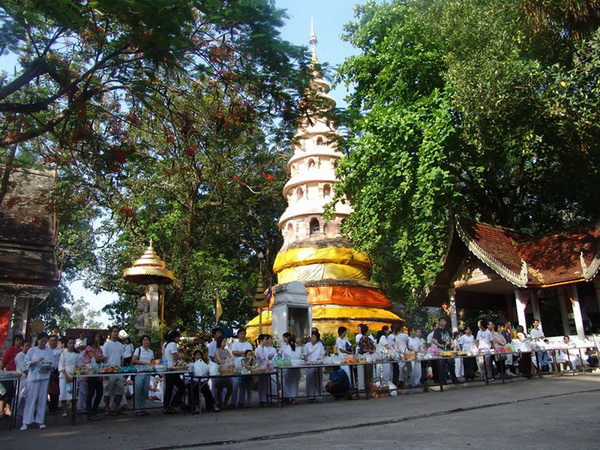
Some years later King Tilokaraj was again told by his wife Nang Hau Mook, that Toa Sree Boonroeng was trying to rebel against him. He then decided to murder his son and make his grandson, Chao Yod Chiangrai, ruler of Chiangrai.
In 2035 B.E. (1492 A.D.) King Tilokaraj died and Chaoyod Chiangrai was crowned King of Chiangmai. After he had arranged the affairs of the kingdom, he then started to investigate the case of his father’s death, to search for the persons who had accused his father of rebellion and thereby also caused his mother’s mental illness. On discovering the persons who were responsible for the sad fate of his father and mother, King Yod Chiangrai sentenced them to death, however, as a devout follower of Lord Buddha, he wished to make compensation for this action.
At this time, a wandering monk came and stayed at the foot of Doi Kham at Tambol Suthep, the place were Rampoeng Temple is situated nowadays. The monk later told King Yod Chiangrai that he had seen rays of light coming from the foot of a tree near where he was staying. He thought that there might be some relics buried there. King Yod Chiangrai visited the spot. Sitting on an elephant’s back, he made a wish
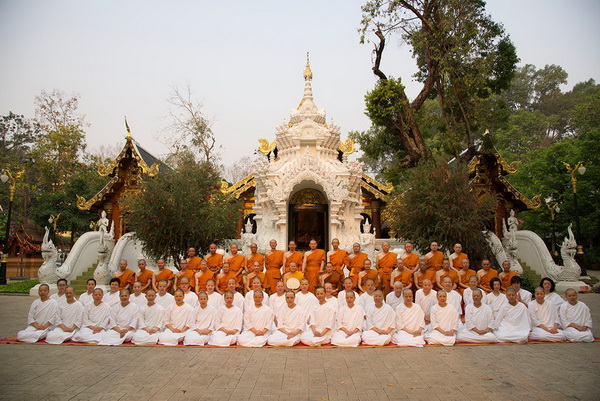
“If there are relics buried here and – I am fortunate enough to become a patron of Buddhism the elephant will stop where the relics are”. As it happened the elephant did stop under the tree and a relic was found. It was a tooth in a container in the Chiengsaen style. The King then brought the relic and held a grand celebration. During the celebration the relic revealed a radiance like the moon at the beginning of the lunar month. The relic was thus placed in a golden container and eventually put in a pagoda in Rampoeng Temple, which was later built near the place where the relic was found.
In this monastery, King Yod Chiangrai had a stone inscription made called “Sila Phak-Kham”.
This inscription survives to this day. It says, “On Friday”, the third day of the seventh lunar month, the year of the monastery, 2035 B.E.(1492 A.D.) at 8: 20 a.m., a most auspicious time, this monastery was established by the religions and secular authorities of Chiangmai. The King commanded that Queen Atapadevi was to take charge of the construction of the monastery. The Queen set up a committee responsible for the construction consisting of the following persons:
The Committee on the Religious Side :
1. Phra Maha Samiyana-bodhi-chao
2. Phra Maha Thera Surasimaha-bodhi-chao
3. Phra. Maha Thera Dharmasenapati-chao
4. Phra Maha Thera Saddharma-thira-prasad-chao
5. Phra Maha Thera Yanasaizara Armitra-chao
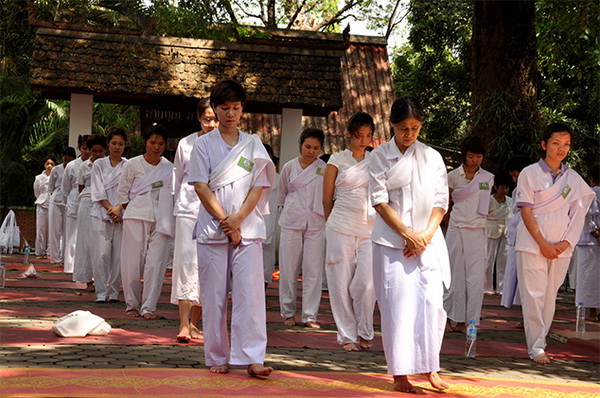
The Committee on The Secular Side :
1. Atapadevi Director
2. Chao Muang Yee
3. Ativisudha Chao Muen Muang Tin Chieng
4. Chao Muen Kamphraklang
5. Dharmasenapati Muang Cha
6. Chao Muen Nongsuevimonkirati Singharajmontri
7. Chao Pan Chaengkadi Ratanapanyo
8. Chao Muen Sorn Rajapankrig
This inscription reveals that eventually all construction was finished and a sum of money was given to the monastery, the monks, and the people who were to take care of the monastery. There is other evidence telling how Wat Rampoeng was built, a pamphlet was written by Mrs. Mookda Ai-yasen and Mr. Sanguan Chotesukarat dated Saturday,
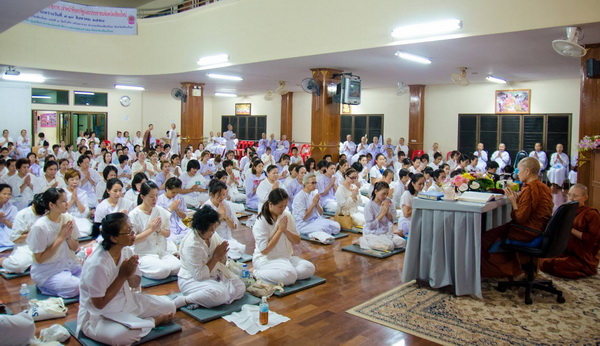
November 2, 2509 B.E. (1966 A.D.), Mrs. Mookda claimed that her knowledge directly came from the spirit of King Yod Chiangrai himself. Mr. Sainguan said that he got his information from the Book of the Yo Nok Chronicle, Both of these writers claimed that Wat Rum Poeng was founded before King Yod Chiangrai ordered his wife, Phranang Proung Noi, to be the director of rebuilding the monastery. Its original name was Tapotaram. Later Phranang Proung Noi was named Atapadevi to honour her as the director of rebuilding it. Her name was derived from “tapo” which means heat, endeavour, an over the symbol of getting rid of all sin.
Rampoeng Temple was deserted for many years. In World War II, when Japanese Army forces came to Thailand, some of them set up their camps near the monastery. Villagers had to go away to a remote area and no one was in charge of the monastery. The Buddha images, the pagoda, Uposatha and Vihฤra built in region of King Yod Chiangrai were badly damaged and stone inscription was buried. In 2484 B.E. (1941 A.D.) a monk in Chiangmai agreed to move the Chief Buddha image in the Vihra from Rampoeng Temple to Phra Singha Temple, which is in Chiang Mai City.
After World War II, the villagers who used to live near Rampoeng Temple and had scattered to different places during the war came back. However, Wat Ram Poeng did not have an abbot to care for it. Some monks came to stay for a while and left. In 2514 B.E. (1971 A.D.) when work on rebuilding the Vihฤra had begun, Khruba Insorn the abbot was to pass away only several months after its completion.
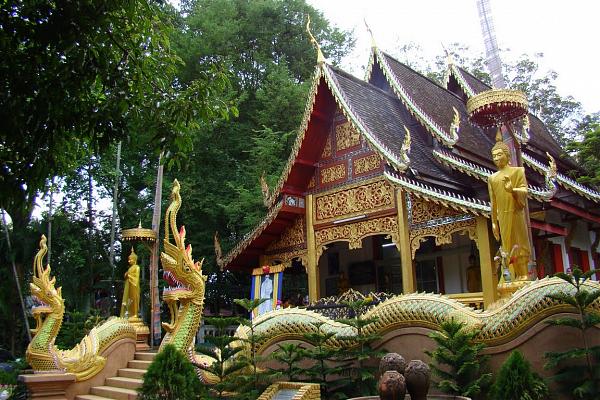
In 2517 B.E. (1974 A.D.) Phrakhru Pipatkanapibarn, the abbot of Wat Muang Mang and the head teacher of the meditation school, came to Wat Ram Poeng. He considered that the monastery would be a suitable place for the practice of the meditation. He decided to stay there and asked all the local people who were interested in Buddhism to help rebuilt the monastery. The response was such that on March 15, 2518 B.E. Wat Ram Poeng had the facilities to conduct courses in meditation and on this auspicious day the meditation centre was founded with Ven. Phrakhru Pipatkanapibam as its head and acting abbot of Rampoeng Temple.
The Buddha image, Luang Pau Sri Ayodhya, in the Uposatha back some 700-800 years was donated by Sergeant Prayoot Tripian on Saturday, March 22, 2518 B.E. (1975 A.D.)
Since its foundation as a meditation retreat its support has grown and is well known to practitioners for it’s quiet, secluded environment surround by woods and fields. The centre has facilities for both monks and lay meditators and in recent years had responded to an ever increasing interest shown by meditators from abroad so that the monastery has appropriate accommodation for both Thailand and foreign students speaking teacher and assistant.
Meditation Program
Message from us : For these meditation programs are not a commercial business ( No any commission ). About meditation expenses at temple be like a donation. We would like only to give information for our customers about the place for making Buddhist meditation in Chiangmai. So, you could contact by yourself. But it’s not comfortable, we could help you for free service to contact with any places where you prefer and we have transfer service to that place which is not too expensive.
| TELEPHONE | +66- (0) 53 278 620 Fax. +66-(0) 53 810 197 |
| E-MAIL/WEBSITE |
•This e-mail address is being protected from spambots. You need JavaScript enabled to view it• |
| DIRECTIONS | Located 4 km southwest of Chiang Mai. |
| MEDITATION SYSTEM | Intensive vipassana meditation based on the Four Foundations of Mindfulness. Mahasi Sayadaw techniques are used. |
| TEACHING METHOD | Instruction and advice are given during daily interviews. Dhamma talks in Thai are presented on the night before wan phra. |
| TEACHERS | Prasuprommayanna Thera (Ajahn Tong), abbot (Thai; age 68) Ven. Luang Paw Banyat Akkayano, vice abbot and head of foreign section (Thai; age 78) One or 2 English-speaking teachers assist. |
| LANGUAGE | The vice abbot and assistants speak English. |
| DESCRIPTION | Buildings are closely spaced on the 15-rai (6-acre) grounds, with some trees and grass. The central stupa dates back to the founding of the wat in 1492. The glittering new building serves as the Tripitika Library; it contains collections of the “Three Baskets” of the Theravadan scriptures in Thai, English, Sanskrit, Sri Lankan, Burmese, Mon, Korean, and Chinese languages. |
| SIZE | monks 60-70, novices about 20, nuns 60-70, laypeople 40-60 (roughly half are foreigners) |
| DAILY ROUTINE | Meditators are encouraged to try to practice 20 hours a day, lying down to sleep only at night. Meditation generally follows a cycle of kraap (bowing), walking, and sitting. Individual interviews take place daily (except on wan phra) in early afternoon. Practice typically begins at the 4 a.m. wakeup. Meditators have freedom to determine the schedule that works best. |
| FOOD | Adequate; vegetarian can be requested and is generally available. Rice porridge and a vegetable are served at 6 a.m., then the main meal at 1030 a.m. Monks and novicesgo on pindabat. |
| ACCOMMODATIONS | Individual rooms with electricity and Thai-style bathrooms (bathing from jars; Asian- and a few western-style toilets) with running water. |
| WRITE IN ADVANCE | Recommended, because the centre is often full. If all rooms are full, you can sign up on a waiting list. Alternate accommodations may be available too. Writing, or better visiting, in advance enables you to reserve a space. Busiest times are the tourist season (Oct.through March) and the Rains Retreat (3-month period beginning mid- or late July). Preference is given to those planning on staying at least 26 days for the whole course and those who have practiced here before. |
| OTHER INFORMATION | The course takes 26 days to complete; a stay of onemonth is a bit better. Because practice is individual, you can arrive and begin at any time. Meditators may be accepted for shorter periods if space is available.Eight precepts are observed. Traditional white clothing is worn. Teachers allow some socializing, though care should be taken not to talk about or disturb others’ meditation. A small foreign library has books in English and a few other languages, Dhamma talks on tapes, and books and tapes for learning Thai. The library is available to meditators who have finished the 26-day course and to outside visitors. The wat is popular with both westerners and Thais. Like Wat Umong, this monastery fell into disuse sometime after its founding. During WW II,Japanese troops occupied and badly damaged the site. Reconstruction of the viharn began in 1971. In 1974, Prakrupipatkanapiban, the abbot of Wat Muang Mang and head teacher of a meditation school in Chiang Mai, came here and stayed; he’s the current abbot and now has the name Prasuprommayanna Thera. Meditation courses at Wat Ram Poeng began in 1975. |


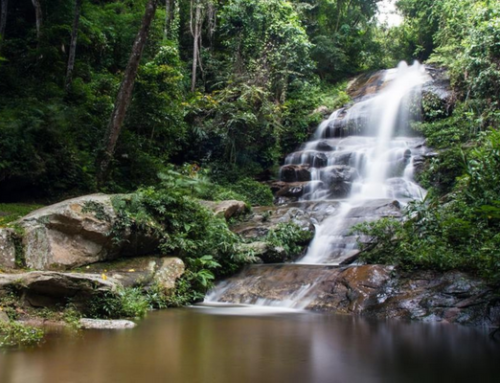
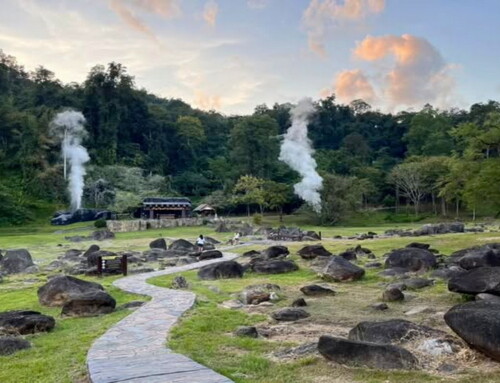
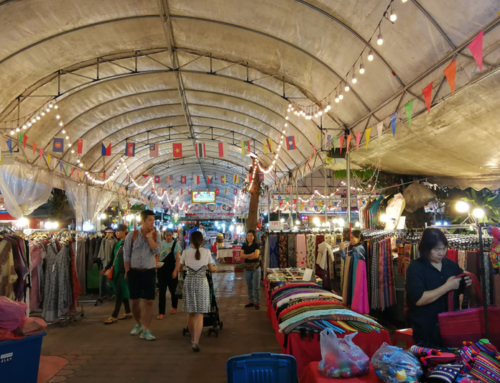

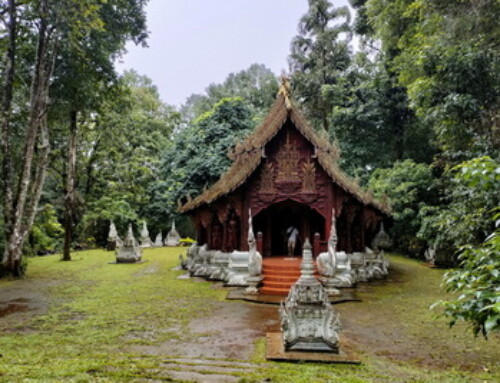


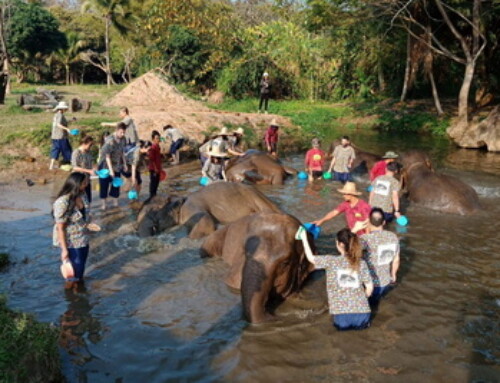
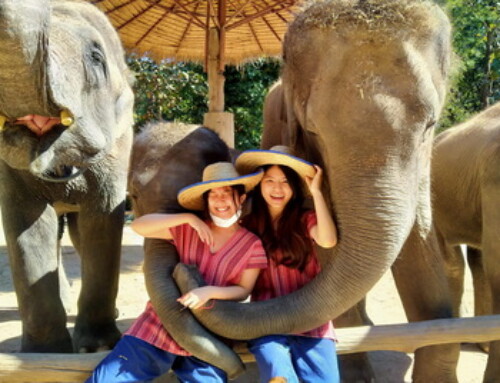

hey i just tried to call but i ran out of talk time. I would be interested to come as soon as possible. my friend has been to the Rampoeng Temple: The Northern Insight Meditation Center
) I am 36 years old man and I live chiang mai would like to changes my life and the dream has been lov already a similar experience. i have a substance abuse problem and i think this would be a good start to a new life 0931806083
Dear Mr.Olli Nuutinen,
Sawasdee ka!
We are the local tour agency in Chiang Mai who operate the tour in Northern Part of Thailand.
As for the meditation place, we just need to give an information on our website but we cannot make a reservation for clients.
Clients have to contact and make a reservation by own.
For Rampoeng Temple: The Northern Insight Meditation Center, please contact them through the phone call or by email (on the link below). In case you cannot contact them, your can go to the temple directly.
http://www.watrampoeng.com/contacts/
Thank you very much for your kindly interested in our website. If you would like any further information, please don’t hesitate to contact us. Have a nice day!